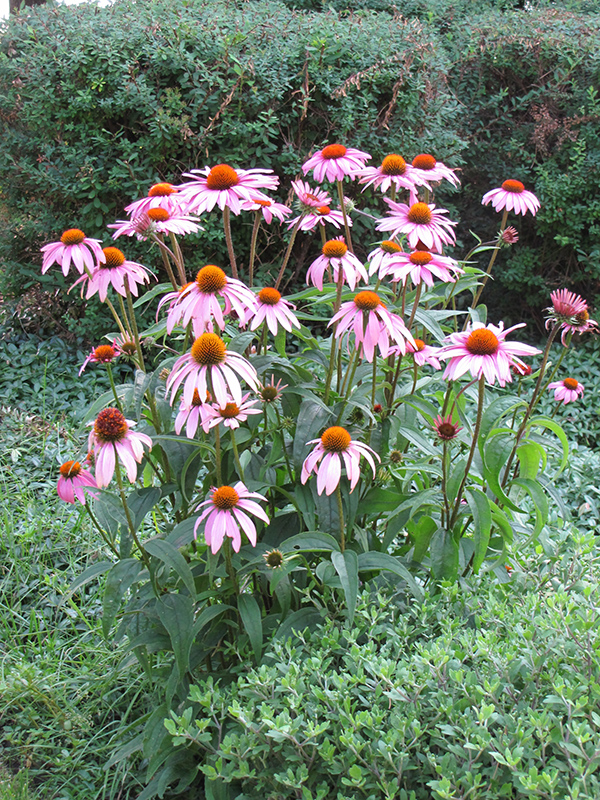


Coneflowers can become a victim of fungal diseases. Water at the base and try to keep the leaves dry. Water them when the top layer of soil is dry. Water them deeply and slowly so that the ground beneath the roots holds water. These are drought-tolerant plants, but they produce better blooms when the soil is consistently moist. Water - 1-2 times per week when established. A periodic dose of liquid fertilizer or compost tea can encourage blooming. Planting Guide for Echinaceaĭepth - bury to the top of the root ball but not over it.įertilizer - not generally needed if you start with good compost. If starting seeds indoors, do so four weeks before the average last frost date for your hardiness zone. Aim for a time when the soil temperature is around 65☏. In the warmer Southern California plant zones, Spring planting is ideal. Ideally, the best time to plant seeds or transplants is during the spring or early summer. For that reason, nursery plants may be a faster path to beautiful blooms. As a perennial, Echinacea will produce several years worth of flowers as a seedling, these beautiful plants may take 2-3 years to produce their first flowers. However, many people opt to buy smaller plants and transplant them into flower beds or contains. Available in 1.5 cubic foot bags are larger totes in the 27 and 55 cubic feet range.Įchinacea is easy to grow from seeds, and mature plants will self-seed freely. FoxFarms Strawberry Fields Potting Soil - offers a soil blend designed for fruiting and flowering plants.The soil is a mixture of aged forest products, earthworm castings, guano and loaded with soil microbes. FoxFarms Happy Frog Soil Conditioner - is an excellent choice for flower and vegetable beds.It offers drainage and water retention, and you can find it in several size bags. It is nutrient-rich with a mixture of bark, sphagnum peat moss, and compost. Black Gold Natural & Organic Flower and Vegetable Soil - is fantastic for annuals and perennials.Three options for creating nutrient-rich soil are: Now an important point about soil - while we talk about poor soil and the fact that Echinacea will grow there, to get these plants to thrive, focus on good, organic ladened soil that holds water but is not wet. That is not to say the soil cannot be consistently moist but also needs to be well-draining. What it does not tolerate is soil that is soggy and wet. It is not overly fussy about soil and will even produce blooms when planted in very poor soil. Soil Conditions for EchinaceaĮchinacea grows in many climates and conditions. Yellow coneflowers are an Echinacea, whereas Black Eyed Susans and Rudbeckia are both in the genus Rudbeckia – all are members of the Asteraceae or sunflower family.Īll make beautiful additions to a flower garden, but our focus here is on Echinacea. Yellow coneflowers are not the same as Black Eyed Susans or Rudbeckia. These are also known as the prairie coneflower, gray-head coneflower, and pinnate prairie coneflower. These, too, have a medicinal aspect, but it is those beautiful showy flowers that attract attention in today’s world. Yellow coneflower - Ratibida pinnata - A wonderful bright yellow coneflower that grows in dry prairies and across arid savannas. When pale purple coneflower is established, it will handle drought conditions and the sunny summer in Southern California.
#PURPLE CONEFLOWER SEEDLING FULL#
They like full sun and soil that is well-draining. Like most Echinacea, these grow to 2-3 feet in height and about 1 foot wide. Pale Purple Coneflower - Echinacea pallida - is an excellent plant that features thin leaves and pale purple blooms, often hinting of green to them. You cannot go wrong with either, and planting a mixture of the two is eye candy. Both offer beautiful purple blooms with a yellow-orange-green seed center. angustifolia has more of a fleshy root, and E. In terms of medicinal uses, these two are pretty much equal. The Purple Coneflower is one of the most popular - Echinacea purpurea, but Echinacea angustifolia, or the narrow leaf purple coneflower. The Varieties of Echinacea and Coneflowers There are a few options for plant choice, and as you continue to read, we will go through a few of those, their growing requirements, and some products that help you become successful at growing Echinacea. It is just one option when it comes to growing Echinacea. Echinacea purpurea - the purple coneflower is beautiful, medicinal, and a member of the sunflower family.


 0 kommentar(er)
0 kommentar(er)
